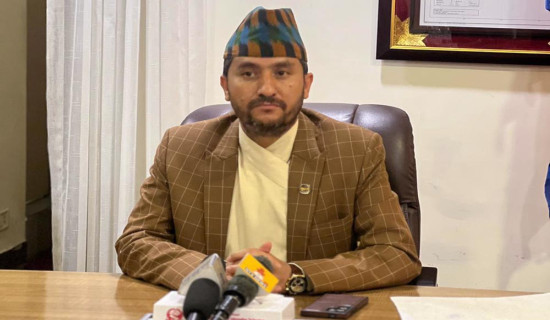- Thursday, 15 January 2026
Make sure to see Changu’s eternal lamp for easy transition to afterlife
Bhaktapur, Nov. 26: Lore has it that in their journey to the afterlife, the deceased are stopped at the Yamadwar, the gateway to the Realm of Death, and are asked if they have ever watched Lalitpur’s Narsingha Jatra and observed Changu Narayan’s Akhanda Deep (eternal lamp). Those that have, gain entry; those that have not might not.
The Narsingha Jatra occurs every year five days after the Janai Purnima while the Akhanda Deep is lit on the 12th day of the bright fortnight of the lunar month of Kartik (Kartik Shukla Dwadashi), which fell on Friday this year.
“People from all over Kathmandu Valley come to get an auspicious view of the Deep,” Chakra Dharananda Rajopadhyaya, priest of the Changu Narayan Temple, shared with The Rising Nepal. “Devotees also circumambulate the Narayan Temple 108 times on that day,” he added.
But what exactly is this fabled Akhanda Deep (uninterrupted flame) that one must see to find salvation? “It is pretty much all in the name,” Rajopadhyaya chuckled. “An unbroken flame is a flame that is not broken – a lamp that, once lit, stays lit for a set amount of time.”
In Changu, the Deep is lit on the evening of the Kartik Dwadashi and is maintained until the next day.
Rajopadhyaya described, “Dwadashi starts with us performing the daily worship required at the Changu Narayan Temple. Then, we perform an oblation called the Barshabandhan Hom. Another oblation, Tulsi Hom, is also performed inside the temple. At dusk, we perform the evening Arati. The fire from the Arati is used to light the continuous flame in a special lamp (Panas) arranged by members of the Bhadel community.”
The day, though, is still intriguing. Rajopadhyaya perhaps understood this as he himself asked, “Why does this take place on Dwadashi when Ekadashi is considered a day more closely associated with Lord Narayan?”
He then proceeded to explain that the Nepal Mahatmya, a legendary account of the sacred places and deities of Nepal, noted Dwadashis, Wednesdays and full moon days as propitious for Changu Narayan. “Worshipping this deity on these days helps the worshipper earn great merit,” he said.
It is because of this significance that many other Changu festivals, such as the Pavitrarohan Puja and the Mahasnaan, are also celebrated on Dwadashis of various lunar months.
But it is getting ever harder to perform the temple’s rituals. Rajopadhyaya informed that the Guthi Sansthan, the chief government managing the nation’s temples and religious trusts, and their activities and property, only gives Changu Narayan Rs. 500 per month. “That is around Rs. 16 per day.”
“We need to offer rice pudding to the god every day. But, at Rs. 16, we cannot even purchase milk, let alone anything else. So, we offer the weekly potions on Wednesdays and other special days only.”
“The tradition of feeding 108 Brahmins here on Jugadi Nawami has died out because the money the Guthi Sansthan offered to do it was in Paisa, not even Rupees,” he said.
Rajopadhyaya complained that the local government and other state bodies were also apathetic towards the preservation of the UNESCO World Heritage property. “Twice a year, on the full moon day of the bright fortnight of the month of Paush and the 12th day of the bright fortnight of the month of Shrawan, we have to walk from Changu Narayan to Hanumandhoka and also present Puja and Prasad to the President. But the state has not even extended any support for this.”
As a result of the lack of assistance and incentives, many trusts and traditions associated with the temple have disintegrated or are falling apart. “Our intangible heritage is at serious risk,” Rajopadhyaya put it plainly.
The deity that made the Brahmin angry
Changu Narayan appears to be as old as old itself because stories say that the temple already existed when Lord Krishna came to the Kathmandu Valley in the Dwapar Yuga, the third of the four Yugas of Hinduism.
Rajopadhyaya told The Rising Nepal a story from the Nepal Mahatmya that describes the origins of Changu Narayan. According to the story, there once was a forest of Champak trees covering Dola Hill in present-day Bhaktapur. And in a corner of that forest lived a Brahmin named Sudarshan.
Sudarshan kept a few cows and employed cowherds to look after them. Every day, the cowherds would milk the cows and give the milk to Sudarshan. The Brahmin would then use the milk to make Panchamrit – a holy elixir usually made with milk, curd, sugar, honey and ghee.
But suddenly, without notice or information, the herders stopped bringing the milk to Sudarshan. He waited for many days, but the cowhands did not come. So, he himself went to them and asked what had happened.
The cowherds answered that the cows had stopped producing milk. This puzzled the Brahmin as his cows were all healthy and in prime milk-producing condition. Besides, how would all the cows stop producing milk at once?
Sudarshan concluded that someone was stealing his milk and became angry. He pledged to kill this thief and one day, followed his cows into the Champak Forest, where they grazed, with his sword in hand.
He saw his cows stop below a particular Champak tree and suckle a boy, as black as a moonless night, that emerged from it.
This was all the proof the Brahmin needed. Convinced that the boy was the thief, he ran towards him and beheaded him with his sword.
But, as the headless body hit the ground, Lord Narayan appeared from it. This pushed Sudarshan into regret who felt he had committed a grave sin by decapitating a god. He was about to turn the blade on himself, but Narayan stopped him.
“Fear not, Oh Brahmin!” the god spoke. “You have not sinned but rather have released me from a curse.”
“One of your ancestors, Sumati, was a skilled and powerful Tantric who had sided with the demons during a war with the gods in the distant past. No other god could defeat your strong forefather, so I was forced to chop his head off with my Sudarshan Chakra.
“But by doing so, I brought upon myself the sin of Brahmin-murder, which could only be cleansed by having my own head lopped off by a descendant of Sumati. You have not killed me but rather, liberated me.”
The place where the boy was beheaded is where the Changu Narayan Temple stands today. Narayan appointed Sudarshan and his progeny as the priests of that temple. The cowherds are the Bhadels who also carry out various functions at the temple along with the priests who bear the surname Rajopadhyaya.
One Lord, many names
Priest Rajopadhyaya shared that Changu Narayan has had many names over the centuries.
“During the Lichhavi era, the god was called the Dola Shikhar Swami,” he informed. Dola is the name of the hill where the temple is situated (which itself takes its name from the word ‘Dolayamaan’ which means tremor). Shikhar means the top and swami means the lord. “His name was the ‘Master of the top of the Dola Hill.”
“In the Malla era, the deity took on the Nepal Bhasa name of Chagun Narayan,” Rajopadhyaya said. “Cha is the Nepal Bhasa word for Champak trees and Gun (as in nasal Goo) refers to forest. So, the Narayan in the Champak Forest became Changun Narayan and later Changu Narayan.”
In Sanskrit, the god is called Champak Narayan.


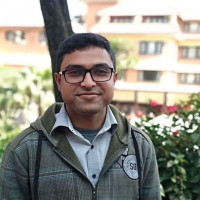
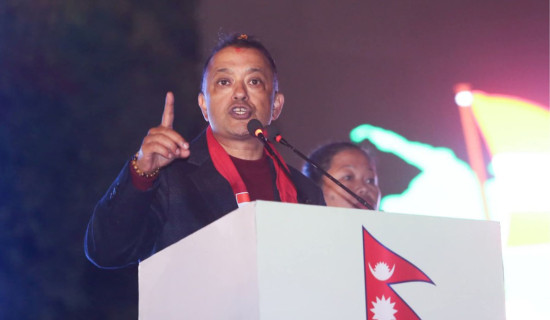
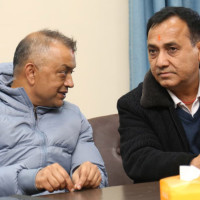

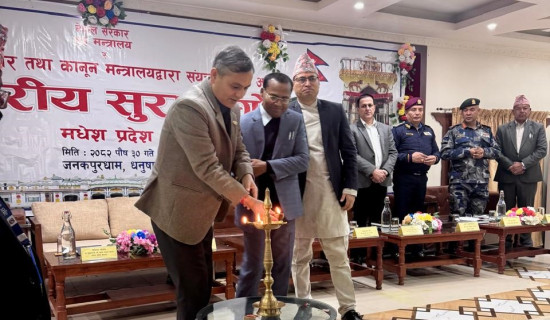

-square-thumb.jpg)
